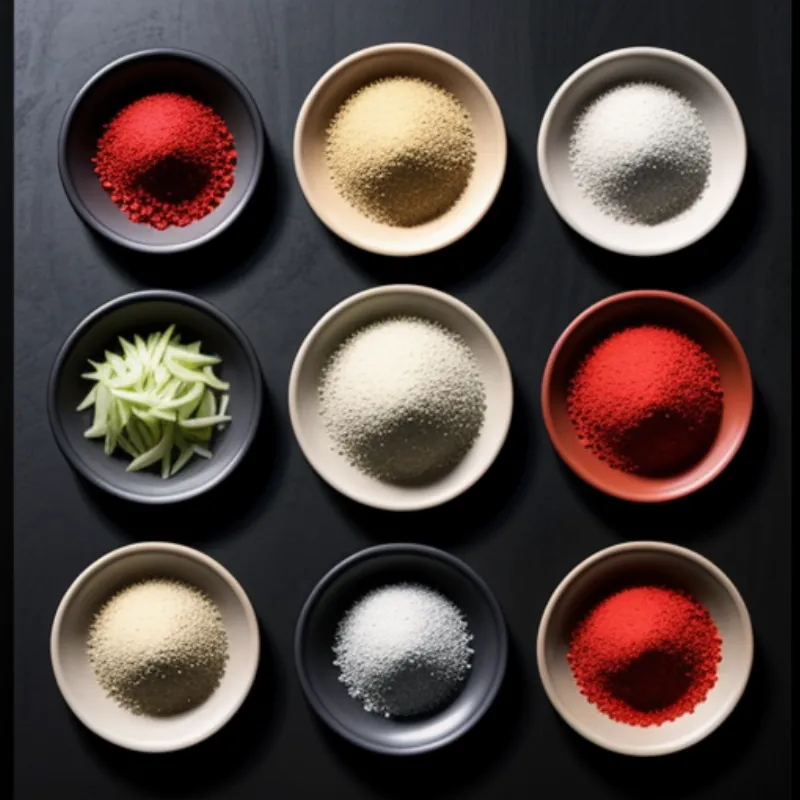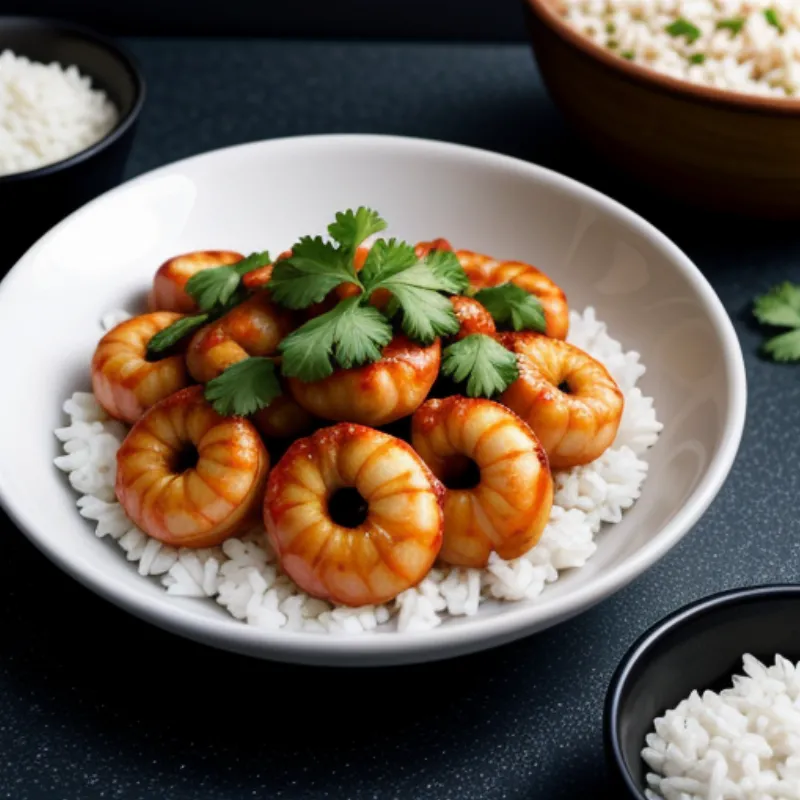Sambal Udang, a fiery and aromatic Indonesian chili sauce, adds a burst of flavor to any dish. This vibrant condiment, featuring the perfect blend of chilies, shrimp paste, and aromatics, will tantalize your taste buds and leave you craving more. Whether you’re a seasoned chef or a home cook looking to spice up your meals, this comprehensive guide will teach you How To Make Sambal Udang from scratch, mastering the authentic flavors of Indonesia.
Delving into the Depths of Sambal Udang
Imagine the aroma of freshly toasted chilies and spices wafting through your kitchen, a prelude to the flavor explosion that awaits. That’s Sambal Udang – an essential part of Indonesian cuisine, where no meal is complete without a dollop of this fiery condiment. Its versatility knows no bounds, pairing perfectly with grilled meats, seafood, rice dishes, noodles, or even a simple plate of vegetables.
“Sambal Udang, in its essence, is a celebration of chilis and the depth of flavor they bring to the table,” says Chef Rani Malakar, a renowned Indonesian chef and author of “Spice Odyssey: Exploring the Flavors of Indonesia.” “The addition of shrimp paste adds another layer of umami, making it a truly unique and addictive condiment.”
Unveiling the Ingredients for Sambal Udang
To embark on this culinary adventure, gather the following ingredients:
Main Ingredients:
- 10-15 dried red chilies (adjust to your spice preference)
- 2 tbsp shrimp paste (terasi)
- 1 cup cooking oil (for sauteing)
Aromatic Base:
- 6 shallots, peeled and roughly chopped
- 4 cloves garlic, peeled and roughly chopped
- 1-inch ginger, peeled and roughly chopped
- 2 lemongrass stalks, white part only, bruised
Flavor Enhancers:
- 2 tbsp tomato paste (optional, for a richer flavor)
- 1 tsp salt, or to taste
- 1/2 tsp sugar, or to taste
Optional Garnishes:
- Freshly chopped cilantro
- Thinly sliced red chilies
- Lime wedges
Note:
- Dried red chilies: You can use a mix of different chilies for varying levels of heat and flavor. Bird’s eye chilies will give you intense heat, while Kashmiri chilies offer a milder flavor with vibrant color.
- Shrimp paste (terasi): Available in blocks or powdered form, it adds a distinct umami flavor. If unavailable, substitute with 1 tbsp fish sauce.
- Lemongrass: Bruising the lemongrass helps release its citrusy aroma.
Essential Tools for Sambal Udang Preparation
- Large frying pan or wok
- Mortar and pestle or food processor
- Spatula
- Small bowl for serving
 Sambal Udang ingredients
Sambal Udang ingredients
Step-by-Step Guide to Making Sambal Udang
- Prepare the chilies: Remove the stems and seeds from the dried chilies for a less spicy sambal. If you prefer a more intense heat, leave some seeds intact.
- Toasting the aromatics: Heat the cooking oil in a frying pan or wok over medium heat. Add the shallots, garlic, ginger, and lemongrass. Sauté for 5-7 minutes, until fragrant and lightly browned.
- Incorporating the chilies and shrimp paste: Add the dried chilies and shrimp paste to the pan. Continue to sauté for another 3-5 minutes, stirring constantly to prevent burning. The shrimp paste should melt and release its aroma.
- Blending the sambal: Remove the pan from heat and let the mixture cool slightly. Transfer the contents to a mortar and pestle or a food processor. Grind or blend until a coarse paste is formed, adding a splash of water if needed to facilitate the process.
- Adjusting the flavor: Return the sambal paste to the pan and heat it over low heat for 2-3 minutes. Add the tomato paste (optional), salt, and sugar. Adjust the seasoning according to your preference.
- Simmering for perfection: Simmer the sambal for another 5-7 minutes, stirring occasionally, until the oil separates and the sambal thickens. This step deepens the flavors and enhances the texture.
Pro Tip: “For a smoother sambal, soak the dried chilies in hot water for 15-20 minutes before blending. This softens them and makes it easier to achieve a finer texture,” advises Chef Rani Malakar.
Presentation and Serving Suggestions
Transfer the Sambal Udang to a serving bowl. Garnish with freshly chopped cilantro, thinly sliced red chilies, and lime wedges for an extra burst of freshness.
 Sambal Udang serving
Sambal Udang serving
Savoring the Spicy Delight: How to Enjoy Sambal Udang
This versatile condiment complements a wide array of dishes:
- Traditional Indonesian Cuisine: Serve as a condiment with Nasi Goreng (Indonesian fried rice), Mie Goreng (fried noodles), Satay (grilled skewers), or Gado-Gado (Indonesian salad with peanut sauce).
- Grilled Delights: Use it as a marinade or dipping sauce for grilled chicken, fish, shrimp, or tofu.
- Flavor Booster: Add a spoonful to soups, stews, or stir-fries for an extra kick.
- Versatile Spread: Spread on sandwiches, burgers, or wraps for a spicy twist.
Storing and Preserving Your Sambal Udang
To enjoy this flavorful condiment for an extended period, store it in an airtight container in the refrigerator for up to 2 weeks. For longer storage, freeze the sambal in small portions for up to 3 months.
Frequently Asked Questions about Sambal Udang
Can I adjust the spiciness of the sambal?
Absolutely! The spiciness of Sambal Udang is easily customizable. For a milder sambal, remove the seeds and membranes from the chilies before grinding. If you prefer a fiery kick, leave some or all of the seeds intact.
What can I substitute for shrimp paste if I can’t find it?
While shrimp paste adds a unique umami flavor, you can substitute it with fish sauce. Use 1 tablespoon of fish sauce for every 2 tablespoons of shrimp paste in the recipe.
Can I make a vegetarian version of Sambal Udang?
Yes, you can make a delicious vegetarian sambal by omitting the shrimp paste. To enhance the umami flavor, consider adding a teaspoon of soy sauce or a tablespoon of nutritional yeast.
Embrace the Art of Sambal Making
Making Sambal Udang is a culinary adventure that allows you to explore the bold and vibrant flavors of Indonesian cuisine. With this comprehensive guide, you can recreate this beloved condiment in your own kitchen, adding a touch of spice and authenticity to your meals.
